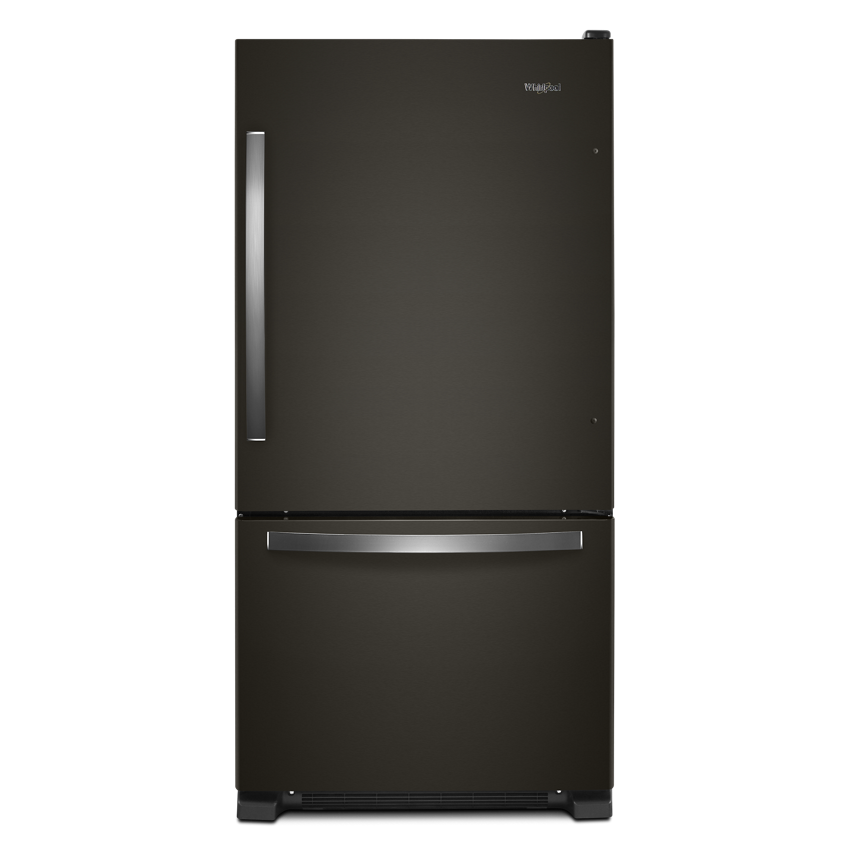To measure a fridge, note its height, width, and depth. Calculate cubic feet by multiplying these dimensions and dividing by 1,728.

Choosing the right refrigerator involves understanding its dimensions and capacity. Accurate measurements ensure a perfect fit in your kitchen space. Measure the height, width, and depth using a tape measure. Record these values to find the cubic feet. Divide the total cubic inches by 1,728 to determine the fridge’s capacity.
This guide helps you select the best refrigerator size for your needs. Be it a compact, top freezer, or French door model, knowing the dimensions aids in making an informed decision. Proper measurements prevent installation issues and enhance kitchen functionality.
Choosing The Right Fridge Size
Choosing the right fridge size is crucial for an efficient and functional kitchen. The size of your refrigerator should match your kitchen space, family size, and usage needs. This guide will help you make an informed decision.
Kitchen Space Considerations
Measure your kitchen space before buying a fridge. Accurate measurements ensure a perfect fit. Follow these steps to measure correctly:
- Measure the height, width, and depth of the space.
- Ensure there’s space for the fridge door to open fully.
- Account for ventilation space around the fridge.
Here’s a simple table to help you visualize common fridge sizes:
| Fridge Type | Average Dimensions (H x W x D) |
|---|---|
| Top-Freezer | 60-69 x 24-33 x 28-34 inches |
| Bottom-Freezer | 67-70 x 29-36 x 33-35 inches |
| Side-by-Side | 65-71 x 30-36 x 29-31 inches |
| French Door | 68-72 x 29-36 x 29-34 inches |
Family Size And Usage
Consider your family size and how you use your fridge. A larger family needs more space. Use these guidelines to choose the right size:
- Small Families (1-2 people): 4-13 cubic feet.
- Medium Families (3-4 people): 14-20 cubic feet.
- Large Families (5+ people): 20+ cubic feet.
Think about your usage patterns. Do you store lots of fresh food? Or do you need more freezer space? Choose a fridge that fits your lifestyle.
You can find the perfect fridge size by considering kitchen space and family size. This ensures your kitchen remains functional and efficient.

Credit: www.whirlpool.com
Standard Refrigerator Dimensions
Understanding standard refrigerator dimensions helps you find the perfect fridge for your space. Each type of refrigerator has unique measurements. Knowing these dimensions ensures a good fit in your kitchen.
Top-freezer Models
Top-freezer refrigerators are standard in many homes. They feature a freezer compartment above the fridge section. Here are the standard dimensions for top-freezer models:
- Height: 60 to 69 inches
- Width: 28 to 32 inches
- Depth: 28 to 34 inches
- Cubic Feet: 14 to 20 cubic feet
These models are space-efficient. They fit well in smaller kitchens. They are also budget-friendly and energy-efficient.
Bottom-freezer Models
Bottom-freezer refrigerators have the freezer at the bottom. The fridge section is at eye level. Here are the standard dimensions for bottom-freezer models:
- Height: 67 to 70 inches
- Width: 29 to 33 inches
- Depth: 33 to 36 inches
- Cubic Feet: 18 to 25 cubic feet
These models provide easy access to fresh foods. They usually offer more storage space. They are perfect for families and people who cook often.
Measuring Your Kitchen Space
Before buying a new fridge, measuring your kitchen space is crucial. Ensuring the refrigerator fits ideally can save you headaches later. Follow this guide to properly measure height, width, depth, and clearance.
Measuring Height And Width
Start by measuring the height and width of the space where your fridge will go. Use a tape measure to get accurate dimensions.
- Height: Measure from the floor to the bottom of cabinets or ceiling.
- Width: Measure from one side wall to the other.
Ensure to leave a little extra space on all sides for ventilation.
Measuring Depth And Clearance
Next, measure the depth of the space. Depth is crucial for ensuring the fridge doesn’t stick out too much.
- Depth: Measure from the back wall to the front edge of your counter.
Also, consider the clearance needed for doors to open fully.
- Door Clearance: Measure how much space the door needs to swing open.
Check for obstacles like walls or cabinets that might block the doors.
| Measurement | Description |
|---|---|
| Height | From floor to bottom of cabinets or ceiling. |
| Width | From one side wall to the other. |
| Depth | From back wall to front edge of counter. |
| Door Clearance | Space needed for doors to open fully. |

Credit: www.whirlpool.com
Understanding Cubic Feet
Understanding cubic feet is essential when measuring a fridge. Cubic feet determine a fridge’s internal capacity. This helps you decide if it fits your needs.
Internal Capacity Explained
The internal capacity of a refrigerator is measured in cubic feet. This measurement shows how much space is inside the fridge. You need to know this to store your food correctly.
Refrigerators come in various sizes. The size you need depends on your family size and eating habits. A more prominent family needs a fridge with more cubic feet.
Most fridges range from 10 to 32 cubic feet. Smaller fridges suit singles or couples. Larger units are best for families.
Calculating Cubic Feet
Calculating cubic feet is simple. You need the fridge’s length, width, and height in feet. Use a tape measure for accuracy.
Follow these steps:
- Measure the interior length in feet.
- Measure the interior width in feet.
- Measure the interior height in feet.
- Multiply these three numbers together: length × width × height.
The result is the fridge’s cubic feet.
For example, if your fridge’s interior dimensions are:
- Length: 2 feet
- Width: 2 feet
- Height: 4 feet
The calculation is 2 × 2 × 4 = 16 cubic feet.
Here’s a quick reference table:
| Length (ft) | Width (ft) | Height (ft) | Cubic Feet |
|---|---|---|---|
| 2 | 2 | 4 | 16 |
| 3 | 2 | 5 | 30 |
| 2.5 | 2.5 | 4 | 25 |
Use this guide to measure your fridge accurately. This ensures it meets your storage needs.
Different Types Of Refrigerators
Choosing the right refrigerator can be daunting. There are many types and sizes. Understanding the different types can help you make an informed decision.
Side-by-side Models
Side-by-side refrigerators have two vertical doors. The freezer is on one side, the fridge on the other. These models offer easy access to both the fridge and freezer.
| Feature | Details |
|---|---|
| Width | 30 to 36 inches |
| Height | 65 to 70 inches |
| Depth | 29 to 35 inches |
| Cubic Feet | 20 to 30 cubic feet |
- Easy access to both compartments
- Ideal for narrow kitchens
- Often come with water and ice dispensers
French Door Models
French door refrigerators have two fridge doors on top and a freezer drawer below. They offer a modern look and plenty of storage space.
| Feature | Details |
|---|---|
| Width | 29 to 36 inches |
| Height | 68 to 70 inches |
| Depth | 29 to 34 inches |
| Cubic Feet | 20 to 28 cubic feet |
- Spacious and modern design
- More storage for more oversized items
- Energy-efficient options available
Compact And Mini Fridges
Compact and mini-fridges are perfect for tight spaces. They fit anywhere and provide convenience. They are ideal for dorm rooms, offices, and small apartments. Measuring them correctly is essential to maximize space and efficiency.
Dorm Room Solutions
Dorm rooms are often cramped and shared. A compact fridge is a must-have. Here’s how to measure for the perfect fit:
- Measure the height, width, and depth of the available space.
- Leave extra space for ventilation, about 1-2 inches on each side.
- Consider door swing and ensure it won’t hit any furniture.
Typical dimensions for a dorm room fridge are:
| Height | Width | Depth |
|---|---|---|
| 20-34 inches | 18-24 inches | 20-24 inches |
These fridges usually offer 1.7 to 4.5 cubic feet of space. This is enough for snacks, drinks, and small food items.
Office And Small Space Options
In offices and small apartments, space is always limited. A mini fridge can be a lifesaver. Follow these steps to ensure it fits:
- Measure the space where the fridge will go.
- Check for power outlets nearby.
- Account for door clearance to avoid blocking pathways.
Common dimensions for office and small space fridges include:
| Height | Width | Depth |
|---|---|---|
| 24-36 inches | 18-24 inches | 20-26 inches |
These fridges typically offer 2.5 to 5 cubic feet. This is enough for lunches, beverages, and essential groceries.
Specialty Refrigerators
Specialty Refrigerators cater to unique storage needs. They are designed for specific purposes. Knowing the dimensions of these units is crucial for proper installation. Let’s explore some popular specialty refrigerators.
Wine Coolers
Wine coolers are perfect for wine enthusiasts. They store bottles at the ideal temperature. Here is how you measure them:
- Measure the height from top to bottom.
- Measure the width from side to side.
- Measure the depth from front to back.
Wine coolers can vary in size. Small units might hold 12 bottles. Large models can store up to 150 bottles. These measurements help you choose the right cooler for your collection.
Built-in Models
Built-in models fit seamlessly into kitchen cabinets. They offer a sleek look. Here’s how to measure them:
- Measure the height from the base to the top.
- Measure the width from side to side.
- Measure the depth from the front panel to the back wall.
Ensure there is enough space around the unit. Built-in models need proper ventilation. They come in various sizes. Compact models start at 24 inches wide. Larger ones can be up to 48 inches wide.
Understanding these dimensions ensures a perfect fit. Specialty refrigerators enhance your kitchen. Choose the right size for your needs.
Tips For Accurate Measurements
Measuring your fridge accurately ensures it fits perfectly in your kitchen space. Follow these tips to get precise measurements and avoid costly mistakes.
Using A Tape Measure
Always use a reliable tape measure for the best results. Start by measuring the height of the fridge from the base to the top. Note down the measurement.
Next, measure the width from one side to the other. Ensure you measure at the widest point. Record this number as well.
Finally, measure the depth from the front to the back. Include the door handles if they protrude. Write down this measurement too.
Double-checking Your Numbers
Double-check your measurements to avoid errors. This step is crucial for accuracy.
- Measure twice and record the numbers each time.
- Compare the measurements to ensure consistency.
- If there’s a discrepancy, measure a third time for clarity.
Pro Tip: Have a friend assist you. They can hold the tape measure steady while you record the numbers.
| Dimension | Measurement (in inches) |
|---|---|
| Height | ___ |
| Width | ___ |
| Depth | ___ |

Credit: www.angi.com
Frequently Asked Questions
How Can I Tell How Many Cubic Feet My Refrigerator is?
To determine your refrigerator’s cubic feet, measure its height, width, and depth in inches. Multiply these dimensions, then divide by 1,728.
How to Measure a Fridge’s Dimensions?
Measure the fridge’s height, width, and depth. Use a tape measure. Note down each dimension for accurate sizing.
What Are the Dimensions of All Refrigerators?
Refrigerator dimensions vary by type. Standard sizes for top-freezer models are 28-32 inches wide, 61-66 inches tall, and 28-34 inches deep. Side-by-side models are usually 32-36 inches wide, 65-70 inches tall, and 30-34 inches deep. French door models are typically 29-36 inches wide, 68-70 inches tall, and 29-34 inches deep.
How Many Cubic Feet is a Size Refrigerator?
Refrigerators typically range from 10 to 30 cubic feet. Compact models are around 10-12 cubic feet, while larger ones exceed 20 cubic feet.
Conclusion
Measuring your fridge ensures you get the right fit for your space and needs. Follow our guide to understand dimensions, cubic feet, and sizes. With accurate measurements, you can confidently choose the perfect refrigerator. Happy fridge shopping!


GIPHY App Key not set. Please check settings